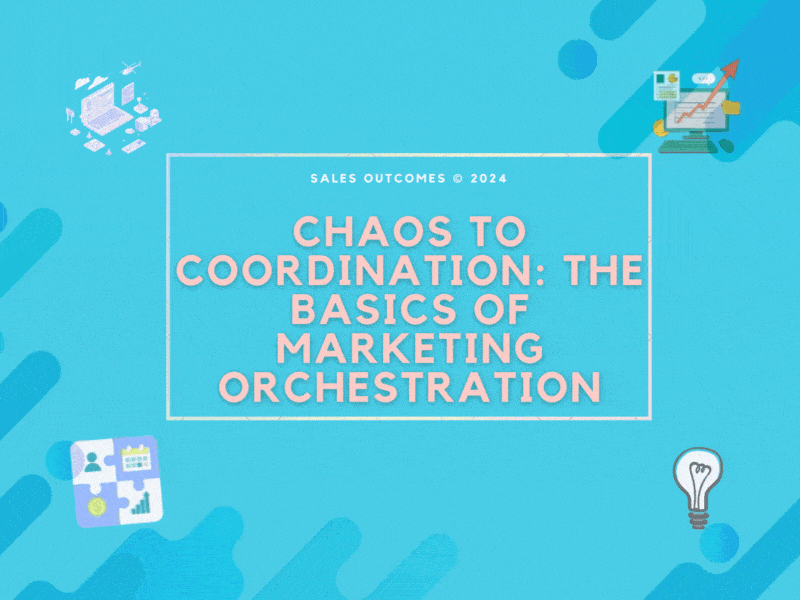
Sample of Ad-Hoc Marketing Execution: The sales team decides to target accounts in an underpenetrated and lucrative segment in the finance sector. They plan on attending a finance-related conference and conducting 1:1 outreach via LinkedIn.
Marketing has initiatives to support growth in the finance sector, but they aren’t aware of the sales team’s targeting initiative. They’ve developed a series of blog posts and white papers for the financial sector, but the content and messaging don’t address challenges and needs specific to the targeted segment.
Marketing Orchestration To Tame The Chaos
Marketing orchestration refers to strategically coordinating and synchronizing sales activities, marketing channels, tactics, and messages to deliver a cohesive go-to-market effort.
Marketing takes the lead in the orchestrated effort, but a strong interlock with the sales organization is essential.
Coordination – The Structured Approach

Implementing Marketing Orchestration begins with leadership’s commitment that the go-to-market effort must transition to a structured approach versus ad-hoc.
The secret to marketing success lies in the tight integration of marketing and sales efforts. Aligning marketing and sales teams can be challenging for many organizations. However, marketing orchestration can help.
The first step of the marketing orchestration journey is to conduct a sales and marketing orchestration workshop:
- Invite a cross-section of marketing and sales stakeholders to participate.
- Establish a cadence for regular team communication after the workshop that holds participants accountable for continued planning and calibration. Once the workshop is over, an established cadence ensures that the teams will continue to engage throughout the year.
- Develop a shared vision. Outlining sales and marketing objectives establishes a foundation for collaboration. The likelihood of success significantly increases when the teams begin to work towards the same objectives.
- Prioritize initiatives, sketch out timelines, and identify the critical coordination steps for the top initiatives.
- In most organizations, sales enablement and sales operations support are needed for effective marketing orchestration. Identify the sales enablement and operations needs and secure the resources for the effort.
The orchestration workshop prompts sales and marketing collaboration and alignment efforts. However, orchestration efforts can be messy or clunky for some organizations. If past marketing and sales collaboration was limited, orchestration may take longer.
By embracing marketing orchestration, sales, and marketing leaders can create a more seamless and personalized experience for customers and prospects. Engagement, conversions, sale results, and marketing ROI will improve significantly.





